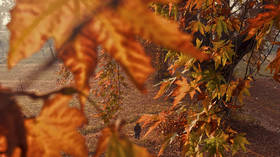Remains of Napoleonic general Gudin repatriated to France from Russia over 200 years after his death during 1812 invasion
Moscow has repatriated the body of Charles-Étienne Gudin de La Sablonnière, a French general who fought in Napoleon's failed 1812 invasion of Russia. His remains were found near Smolensk in 2019, where he died of a cannon wound.
The ceremony for his remains took place at Moscow’s Vnukovo-3 Business Aviation Center on Tuesday, where the funeral cortege was met by Napoleonic re-enactors in army uniforms. The coffin was covered with a French flag, and those involved held a minute’s silence in his memory, before it was loaded onto a plane to fly back to France in time for the country’s July 14 celebrations, also known as Bastille Day.
The ceremony was attended by representatives of the Russian Ministry of Defense and the French Embassy in Moscow, as well as descendants of General Gudin.
Gudin’s body was found in 2019 by archaeologists led by Pierre Malinowski, the president of the Foundation for the Development of Russian-French Historical Initiatives. The vice president of the foundation is the daughter of Kremlin spokesman Dmitry Peskov, Elizaveta Peskova, who called the event valuable “diplomatically, politically, culturally, and historically.”
“General Gudin in some ways represents reconciliation between France and Russia, since Gudin was an enemy of Russia,” Malinowski explained. “In 1812, he attacked Russia. And, today, Russia pays tribute to its enemies and hands over his remains to France.”
Gudin is famous for his association with Napoleon, the emperor of France. The general’s name is even carved on the Arc de Triomphe in Paris. Gudin was killed near Smolensk, following the Battle of Valutino. He led the assault on the Russian troops and was hit by a cannonball, which amputated his leg. He died three days later from an infection.
Also on rt.com Napoleon may have been dead for 200 years but the English sport of French-bashing will live foreverThe ambassador of France in Russia, Pierre Levy, called the ceremony “touching,” and thanked the archaeologists for their work.
Like this story? Share it with a friend!












